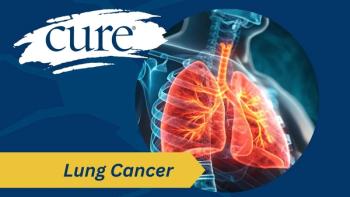
Strange Tattoos: A Look at My Cancer Experience
The temporary tattoos that guided the radiation for my cancer treatment were not beautiful, artistic or cool — they were more than that.
I never believed in marking up, drawing, painting, writing or tattooing on my body, though I’ve never judged or engaged in negative opinions on those who believe in the art of tattoo. In fact, I have marveled at some of the most beautiful body art on human skin that I’ve ever seen.
For almost one month, my body wears little black halfmoon-shaped markings that have clear round stickers on top of them, strategically and temporarily drawn on my sternum, the bottom left side of my right breast, underneath my right breast midway to my waist and underneath my left breast midway to my waist. I look at these strange tattoos and I realize that while they are in no way beautiful, artistic or cool. They’re more.
They’re spotters for the two radiation technicians (RTs, as I call them in my head). I lay down on the slender table, the RTs guide and align my body to the exact position where the tattoos are set to ensure the invisible rays of radiation can “zap,” — can kill — rogue cells that might have remained from the October 2022 lumpectomy that removed the mass from my breast.
I feel lonely when the RTs leave the room to protect them from the rays. The massive block door drags slowly closed. One RT’s voice comes over the loudspeaker, calls my name and announces, “treatment starting.” The huge, grey metal machine with multiple appendages, hums, buzzes and travels slowly from my right side to my middle, to the left side of my body. It pauses each time on its journey from one side to the other, I look up into its one glass eye, and see tiny, metal “teeth” moving back and forth; it reminds me of the monster in the movies “Alien.”
The buzzing, humming and moving stops, the block door drags open, the RTs return, and I am released for now, until the next morning, five days a week, for three weeks.
The last day arrives! It’s finally over! I thank God; I ring the bell, as my mom, daughter and health professionals smile and clap to congratulate the end of my treatment.
In 2007 I was diagnosed with a rare type of ovarian cancer, Sertoli-Leydig stage 1c; I had surgery but no additional treatment. The cancer returned in 2016, and I went through surgery and chemotherapy treatments. I endured infusions for five days, one week, for three months. It was brutal. In addition to the usual sideeffects (nausea,despite anti-nausea drugs, vomiting, chemobrain and fatigue) I developed chemotherapy-induced neuropathy. I never imagined how painful and uncomfortable damaged nerve cells can feel in your hands, knees, calves feet and toes. I tried several medications and physical therapy to palliate my symptoms, nothing truly works. I take Lyrica daily; it takes the edge off — that’s about it.
After the 2016 illness, treatment and side-effect management, I realized how lucky I am for the resilient, ever-present support crew that I have. My daughter took me to each infusion appointment, dropping me off and picking me up each of those days, never complaining about the hour drive each way. My elderly mother traveled from Pittsburgh twice to be with me. My five “sister-friends” and my maternal aunt rallied around, supporting me with cards, gifts, flowers, phone calls and prayers. I constantly worried silently about how they all were feeling, how they were managing their thoughts and emotions about my illness.
After six years of frequent CT scans to monitor the growth of three tiny masses that remained, in October of 2022, the results from the CT declared the tumors were indeed abnormal and had grown. I negotiated the timing of my radiation treatment and surgery with my providers. I wanted the surgery out of the way before the radiation.
In January of 2023, I had a five-hour surgery to remove the three masses. I started radiation on Feb. 20and finished March 13.
I realize that I am faithful, encouragedand resilient through managing my breast and ovarian cancers. Helping me through is the loving care, constant encouragementand timely “check-ins” from my support crew. I am darn lucky to have the knowledgeable, talented, kind and compassionate healthcare team that I have — not everyone can boast about this. And even though I am now free to rub and scrub the strange tattoos away, I am thankful for the purpose they served.
This post was written and submitted by Melanie Schofield-Norris. The article reflects the views of Melanie Schofield-Norris and not of CURE®. This is also not supposed to be intended as medical advice.
For more news on cancer updates, research and education, don’t forget to




